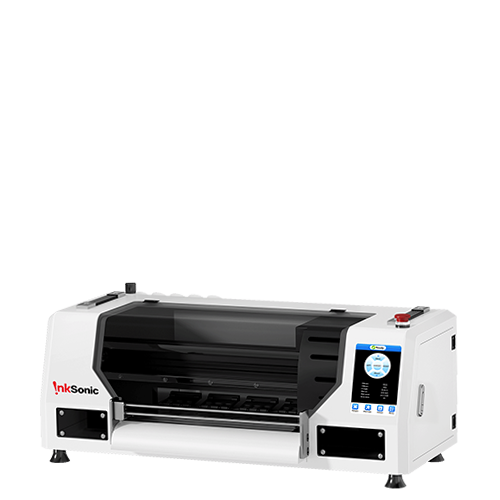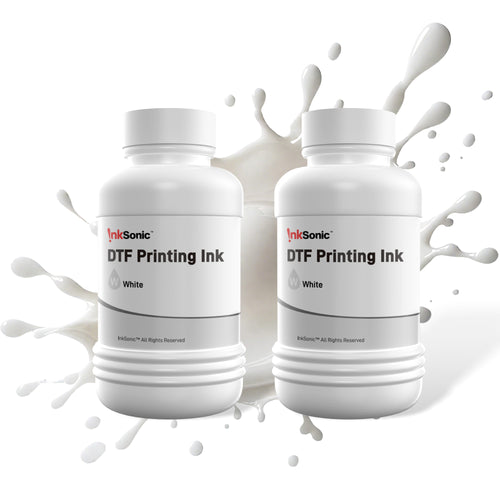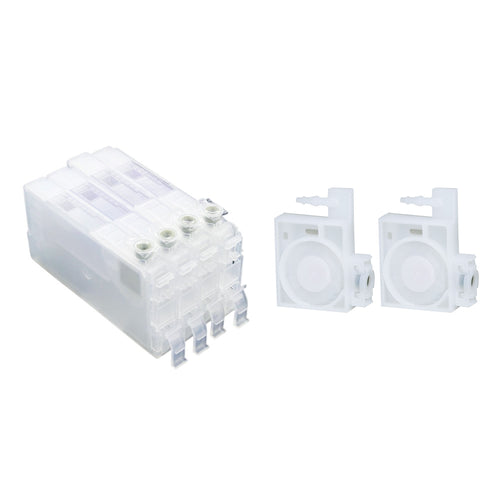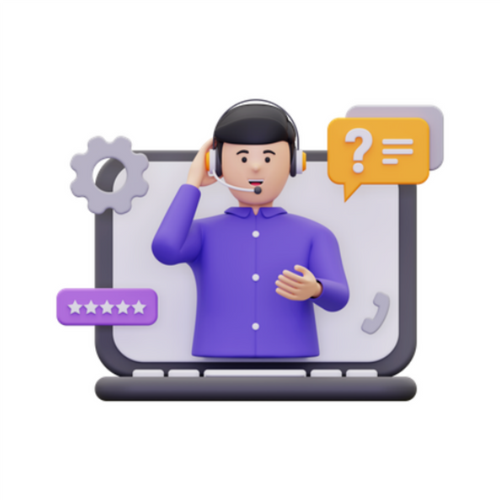1. Introduction
Custom T-shirts have always been a classic business idea—and it’s far from outdated. In fact, with the rise of printing t-shirt equipment, it’s seeing a whole new wave of opportunity. Why? Because it has low barriers to entry, high profit margins, and a broad market. It’s perfect for solo entrepreneurs, small teams testing the waters, and even home-based businesses. No big factory needed, no inventory pressure—this is a truly “light-asset” business.
This article is your step-by-step guide: from brand positioning to choosing equipment, from printing workflow to online sales. You'll learn exactly how to build your DTF T-shirt printing brand from zero to one.
2. Brand Positioning & Basic Planning
When you’re starting your DTF T-shirt business, don’t buy machines or start designing just yet . The first step is figuring out who your customers are . A clear brand position determines 90% of your path forward.
Brand positioning means answering:
Who are you selling to? And why would they choose you?
Here are some popular beginner-friendly positioning styles:
2.1 Pop Culture / Trending Topics

Target audience: Gen Z, students, short-video viewers
Style tips: Bold slogans, meme remixes, funny emoji-style designs
Content inspiration: TikTok, Xiaohongshu, Facebook, Instagram, Pinterest
Pros: Easy to go viral, built-in shareability
Watch out: Be careful with copyright—don’t use celebrity photos or IPs freely
Best for you if: You’re always on top of the latest internet trends and love short video platforms
2.2 Streetwear / Hip-Hop Sports Style

- Target audience: Trendsetters, skateboarders, fitness enthusiasts
- Style tips: Graffiti art, illustrations, street fonts, bold color blocking
-
Content inspiration: Pinterest, street photography, Western fashion brands
Pros: Strong brand identity; once your cultural vibe is strong, you can charge more - Watch out: Don’t go too crazy—be visually bold but maintain balance
- Best for you if: You love streetwear and either draw yourself or collaborate with designers
2.3 Niche Culture / Interest Communities

- Target audience: Anime fans, programmers, bookworms, gamers
- Style tips: Inside jokes, symbolic design, slang + visuals
- Content inspiration: Reddit
- Pros: High loyalty, repeat purchases, strong brand community
- Watch out: You must understand the niche, or your designs won’t resonate
- Best for you if: You’re part of the community (gamer, cat owner, researcher, introvert, etc.)
2.4 Emotional Expression / Lifestyle Attitudes

- Target audience: Office workers, introverts, female customers
- Style tips: Simple slogans, emotional illustrations, short quotes
- Content inspiration: Reddit, social media
- Pros: Easy to execute, low copywriting cost, great for ad targeting
- Watch out: Keep content fresh—don’t reuse old quotes forever
- Best for you if: You’re good at copywriting and emotionally aware of unspoken feelings
2.5 Choose Your Brand Style
Ask yourself:
Which community are you part of? (Do you get your audience?)
Do you have visual/text content resources? (Design skills? You can also adapt viral ideas.)
Will you sell online or offline? (Different customer base.)
Do you want a long-term brand or short-term hits? (One builds equity, one follows trends.)
3. Choosing the Right Printing Technology

Even if you're not familiar with DTF printers yet, we strongly recommend you consider DTF as your first choice. Why?
Because it’s more flexible than screen printing, more durable than heat transfer, and perfect for complex designs or small-batch production.
No need for screen setups or lamination—just print the image onto film and transfer it directly onto the T-shirt. One person can handle the process, it's fast and cost-effective. For beginners, it’s simply the best fit.
4. Materials & Equipment Purchase List

Choosing the right equipment and materials is crucial for a smooth start. Here’s a basic checklist:
- DTF Printer (Recommended: InkSonic 1390/1800)
- Curing Oven
- Heat Press Machine
- DTF Powder
- DTF Ink
- DTF Film
- Blank T-Shirts
T-Shirt Selection Tips

- Fabric: Prioritize 100% cotton—soft, breathable, and ideal for DTF. Blended fabrics are okay but test for ink adhesion. Look for 200–240g weight for structure.
- Fit: Basic crew neck, drop shoulder, oversized, and plus-size relaxed fits are popular. Choose what suits your audience.
- Colors: Best-sellers are white and black, followed by gray, beige, and muted greens. Use white ink as an underbase for dark shirts.
5. Design Prep & File Standards for DTF

Design Prep Tips
You don’t have to design everything yourself. Get inspired from other shops, hire designers, or even use AI tools to generate designs automatically.
Recommended AI tools:
-
Midjourney
-
Leonardo.ai
-
Bing Image Creator
Example prompt: “A funny cartoon pig with sunglasses, kawaii style, white background. Vector, DTF print.”
Check our related blog: “Top Trendy T-Shirt Design Resources” for more ideas.
File Format Suggestions:
- AI/PSD – Professional, high resolution
- PNG – Most common, transparent background, easy to import into RIP software
- JPG – Not recommended, blurry results
- Resolution: 300 dpi
- Color Mode: RGB or CMYK (depending on printer software compatibility
6. DTF Printing Workflow & Heat Press Process

The production process for one T-shirt involves just a few simple steps:
- Import your design into RIP software & resize
- Print the image onto PET film (with white ink base)
- Apply powder & cure it in the oven
- Position the film on the shirt & heat press
- Peel off the film—done!
Once you’re familiar, you can complete one T-shirt in just a few minutes—very efficient.
7. Branding Details – Tags, Labels, Packaging

Want your brand to look professional? These small details matter:
- Hang Tags: Design your own logo + slogan, order custom ones on Alibaba (1688), Vistaprint, Sticker Mule
- Neck Labels: Print inside the shirt or sew woven tags. Use Etsy, Alibaba, Dutch Label Shop, or ask your shirt supplier if they offer this service
- Care Labels: Include wash instructions and reinforce brand messaging
- Packaging Bags: Use clear polybags, zip bags, or eco-friendly pouches to match your brand vibe
Even with a low budget, these extras can elevate your brand quality. Don’t skip them at the start!
8. Photography, Modeling, Listing, and Brand Protection
Photos directly impact sales. It's crucial to present your product well, and we recommend a combination of real model photos and AI-generated mockups to effectively showcase your designs.
📸 Suggested Image Strategy:

The best approach is a mix of real model photos + AI-generated mockups (flat-lay shots, color variations):
- Real Model Photos: Builds trust and allows customers to "visualize themselves" wearing the product.
- AI Mockups: Efficiently generate images and quickly test different designs and color combinations.
Tools Recommended:
- Model photo creation tools: Smartmockups, Placeit, Midjourney (for generating American models)
- Flat-lay image editing: Photoshop, Canva, Fotor
- T-shirt mockup generator: TeeMockup, Printful Mockup Generator
🛍 Popular Sales Channels:

Online Platforms:
- Etsy: Perfect for original designs and handmade feel brands.
- Shopify: Ideal for building your own store and fully controlling your data.
- Amazon Merch on Demand: Leverage Amazon's traffic and sell without inventory.
- TeeSpring (now Spring): No inventory required, great for creators.
- Redbubble / Zazzle: A haven for illustrators and creative patterns.
Social Media Platforms (Must Use for Brand Growth):
- Instagram: Post styling photos, short videos, and interactive giveaways.
- TikTok: Showcase the production process, brand story, and unique style challenges.
- Pinterest: Build a visual inspiration board to drive passive traffic.
Offline Sales Channels:
- Local Markets/Pop-up Shops: Weekend stalls or temporary events.
- Campus Communities: Collaborate with university groups or local influencers.
- Friends Referrals + Invite-Only Campaigns: Create early brand advocates.
📝Initial Suggestions:
- Don’t rush into renting a store—it's expensive.
- Start small with a "home workshop" approach and keep costs low.
Quick Start Tips:
Set up stalls in local churches, community centers, or flea markets.
Use social media (Facebook, Instagram, Tk) to run pre-sale campaigns.
Create a brand Instagram + TikTok account to accumulate your first batch of followers.
Use referral bonuses, "share & win" campaigns to grow your audience.
⚡️ Consider running a "1 shirt for 1 story" campaign to engage customers and collect UGC.
9. Suggested Budget & Cost Structure
Starting a business requires investment, but you need to track expenses carefully. Below is an estimated cost breakdown for a T-shirt startup.
🖨 Printing Equipment Costs (One-time Investment):
Item |
Price Range |
|
InkSonic DTF Printer |
$1,500–$4,000 |
Oven + Heat Press |
$200–$600 |
|
Powder shaker and dryer (optional) /ink cartridges |
$20–$1,200 |
🧴 Material Costs (Per Shirt)
Material |
Estimated Cost (Per Shirt) |
DTF Ink + Powder + PET Film |
$0.6–$1 per item |
White T-shirt Base |
$1.5–$3 per item |
Suggested Retail Price:
- Basic designs: $9.99–$14.99
- Original designs: $19.99–$39.99
- Limited edition/Collaborations: $49.99+
📦 Other Operating Costs (Initial Phase)
Item |
Estimated Cost (Initial) |
Trademark Registration (USPTO) |
$250–$350 per category |
Packaging Materials |
$0.5–$1 per item |
Hangtags, Labels, Wash Labels |
$0.3–$0.7 per item |
Photography/Modeling |
DIY with phone + natural light, or hire photographers ($50–$300 per session) |
Social Media Marketing |
Start with $50–$200 per month for testing conversion on Instagram/TikTok |
💡 Tips:
- If you're on a tight budget, prioritize spending on equipment + sample creation + brand visuals.
- Use tools like Midjourney or Canva to generate AI model images and save on photo shoots.
- Register your trademark early to avoid brand hijacking down the road.
10. Conclusion
DTF printing has opened up more potential than ever before for T-shirt customization companies. With little initial investment, fast returns, and a comparatively easy operation, it's the ideal choice for beginners who want to start small, learn the way, and establish their own brand.
As long as you choose the right niche, control your costs, and consistently drop new designs, you might well win your first pot of gold.
Frequently Asked Questions (FAQ)
Q1: How is DTF unique as compared to heat transfer printing?
A: DTF prints are stronger, can handle more complex designs, and do not require cutting on vinyl. It is faster and easier.
Q2: How many T-shirts per day can be printed by one DTF printer?
A: Depending on the model machine and your skill, you can make 80 to 200 shirts a day.
Q3: Do I need to know how to design?
A: Not necessarily. You can hire a designer, follow trending designs, or even use AI tools to generate artwork automatically.
Q4: Will the design come off in the washing machine?
A: High-quality DTF prints can withstand over 80 washes. Proper heat pressing is the key to durability.
Q5: What if I have a limited budget when starting out?
A: Start with low-cost setups. Consider crowdfunding from friends, joining a distribution model, and aiming to recover your investment before scaling up.


































